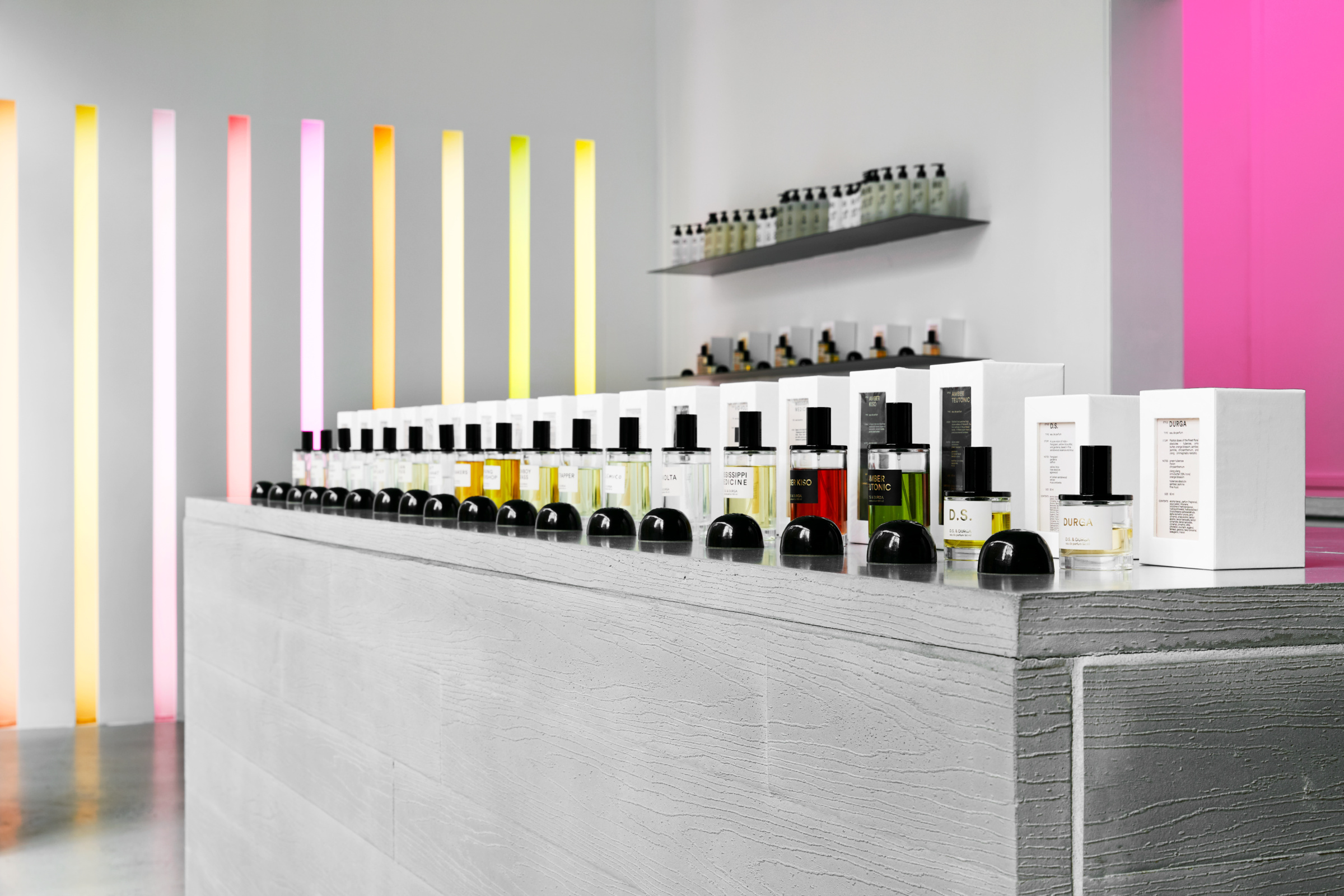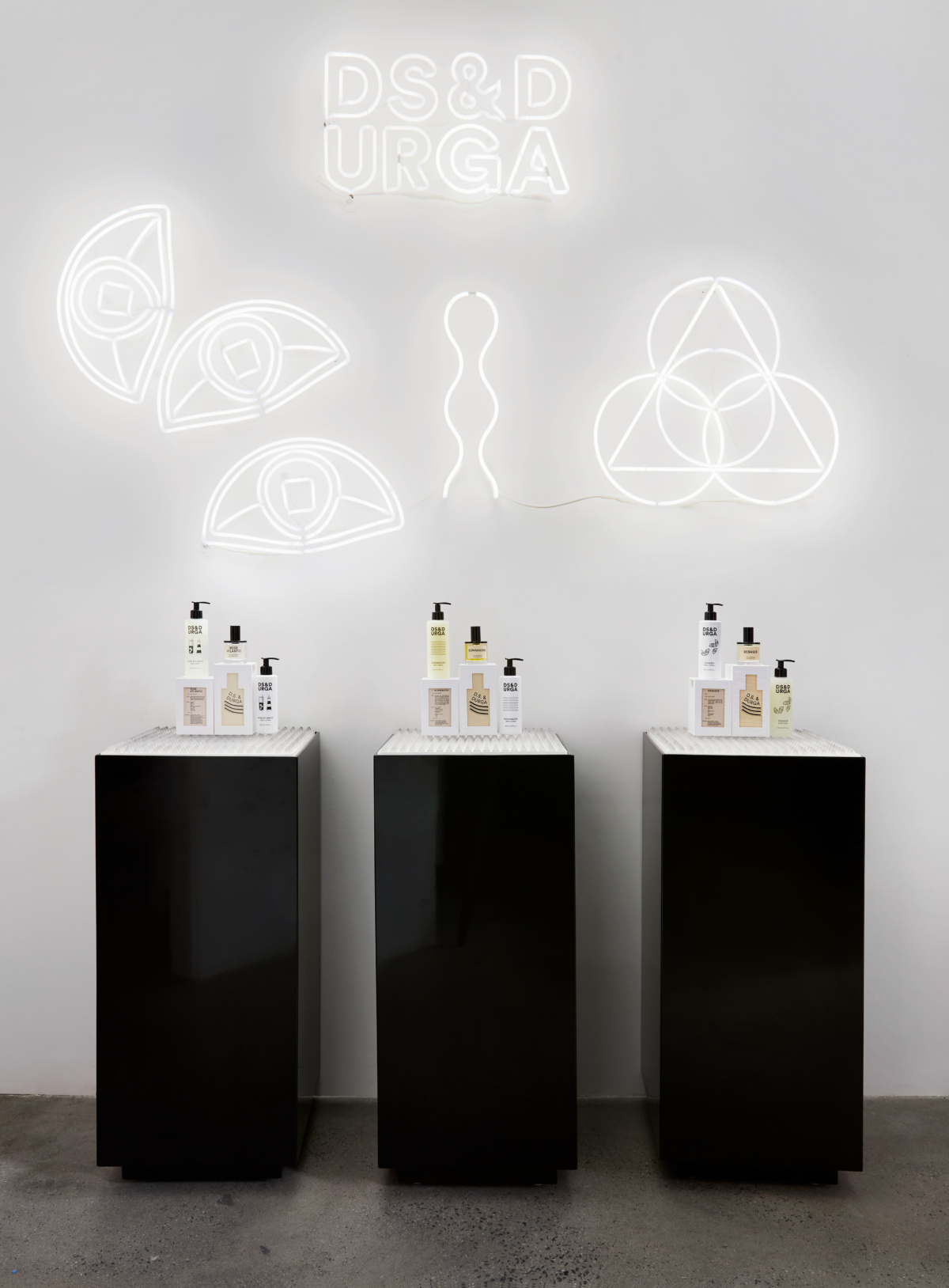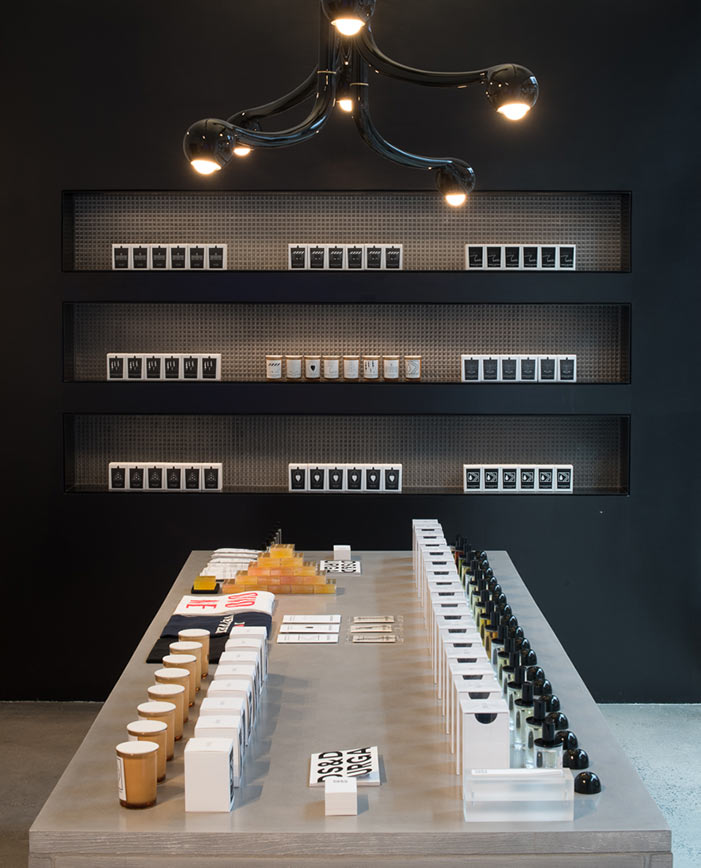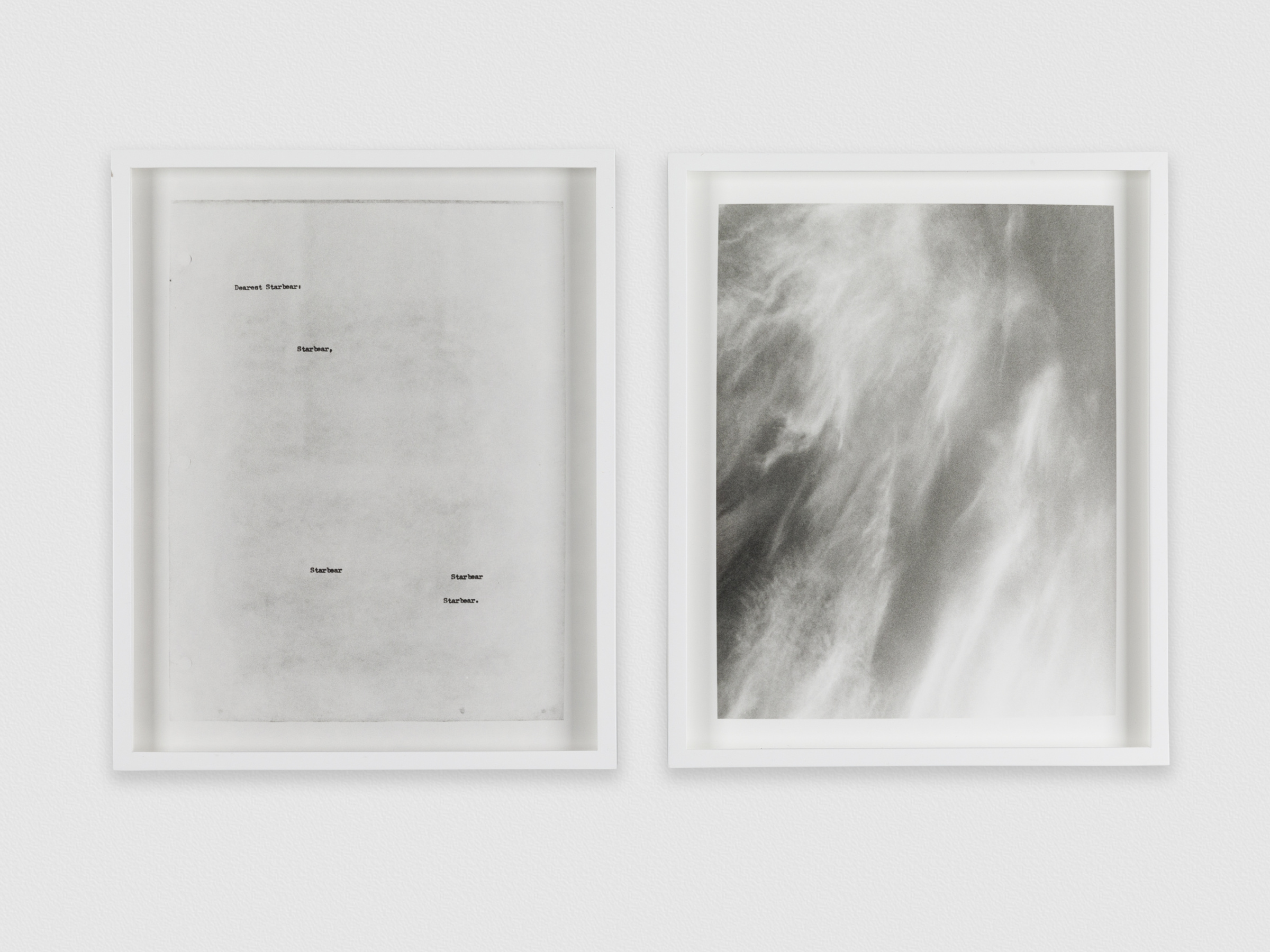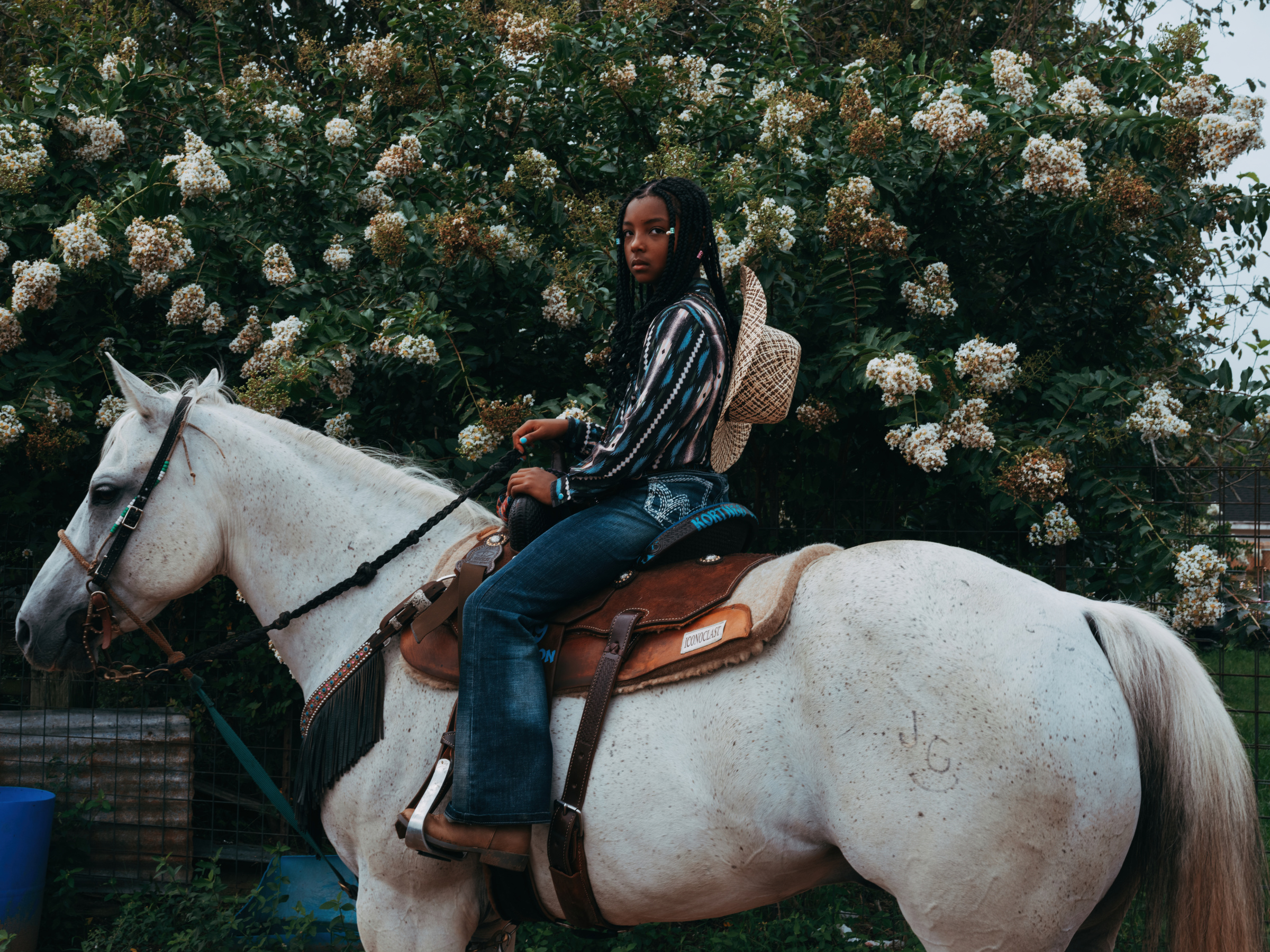It’s probably safe to say that D.S. & Durga is the only perfume house that sports a fragrance inspired by the rituals of proto-Mississippian culture circa 1200. But if that scans as novelty, it’s quickly apparent in speaking with cofounders Kavi and David Moltz that the pair’s company has blossomed—from cult favorite of the Brooklyn maker scene into an industry vanguard—thanks to purposeful vision and not gimmickry. The company has steadily built up a devoted clientele since launching in 2008, with perfumes, scented candles, and body products that chafe at tradition and betray a clear sense of storytelling. (Cowboy Grass, for example, which blends sagebrush, white thyme, and prairie switchgrass, is “perfect for robbing banks on horseback.”) In early February, Kavi and David launched their hotly anticipated flagship store, in Manhattan, and the design pops with that same sense of intentionality.
We recently caught up with Kavi, who handles packaging design and branding, and David, who sources the scents, to chat about bringing an edge to the perfume world, the hard work of launching a flagship, and how their other creative backgrounds (architecture for Kavi, music for David) translate to the fragrance world.
- Photo by David Mitchell, courtesy of D.S. and Durga
- A custom chandelier by Entler hangs above the concrete island. Courtesy of D.S. & DURGA.
The store design looks extremely intentional, very sleek but open. How closely were you involved in the design, and what were you going for in terms of aesthetic?
Kavi Moltz: I trained as an architect, and I was working as one when we started D.S. & Durga. We started sort of as a hobby on the side while we were both working other jobs. We’d always wanted to open a store. It seemed to me the perfect culmination of combining the perfume work with what I’ve always loved and studied.
But when it came time to do it, I had my hands full with just managing the business, so we trusted an old high school friend, Krista Ninivaggi, of K&CO, here in New York. They executed the whole project, and we gave our input in terms of aesthetic and materials. We wanted it to have a hard-edged, Brutalist, punk rock, very New York feel to it, and stay away from anything that felt on the soft and feminine side. So a lot of concrete, a lot of steel, there’s some acrylic spikes on walls that display the product. She brought this whole vision together under our direction, and we’re very happy with how it turned out.
Yeah, I noticed the concrete centerpiece. Brutalism makes total sense there.
KM: Yeah, we worked with a lot of Brooklyn craftspeople. The concrete is board-formed, so it’s a functional piece, the island that you see in the center, which stores all the perfume inside. And the panels are board-formed concrete, except for the smooth top—all custom-made. It’s beautiful. The desk is also made from board-formed concrete and suspends from a steel bar, so it’s floating off the floor. There’s a lot of intention and thought to details.
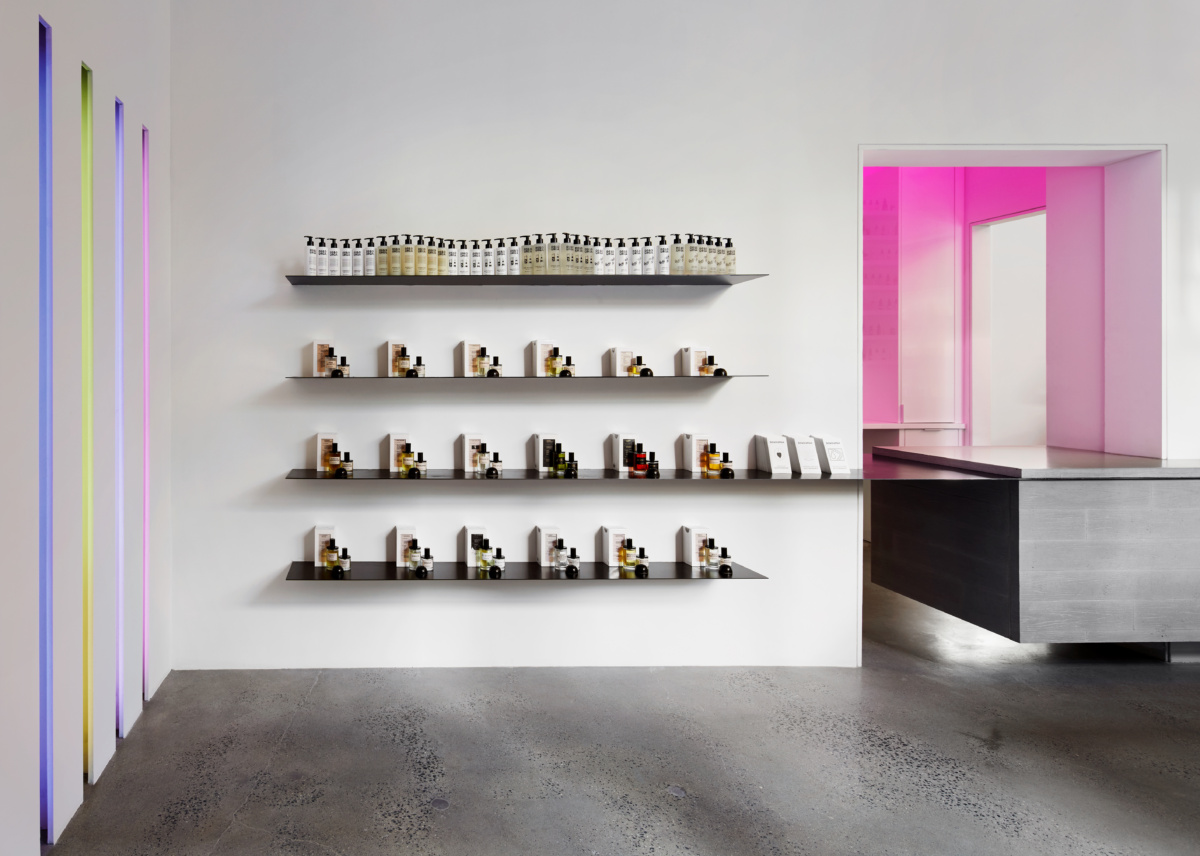
Photo by David Mitchell, courtesy of D.S. and Durga
You started the business around 2008. How long have you wanted to open a permanent brick-and-mortar store? What kind of challenges did you face in launching the flagship, in terms of financing, location scouting, or anything else?
David Moltz: The area where it is is very central New York to me. I worked at Cafe Gitane [about one block southeast], so that neighborhood was always on our mind, and there are a lot of beauty brands there, so it makes sense. We wanted high foot traffic; we didn’t want it to be just a showpiece. We’d get tons of emails like, “Hey, where can I find your stuff?” And people would have to come out to our studio in Bed-Stuy that was open for five hours a week, on Saturday. I walked into that [Manhattan] space—which runs longways; most places there are railroads—so it has double the frontage and really high ceilings, which is super impressive. And we realized we had to pay a premium to be in a space like that rather than go halfway.
David, you’re a musician; Kavi, you’re an architect by training. How did you come to be interested in the perfume industry? And how have those other creative professional outlets helped you here?
KM: Both David and I have a holistic approach to design and creativity in general. Once you’re in that space you can do many things within it. There are some specifics I learned, tools and programs in architecture school that helped me execute the product design and branding. But more than that, I just learned the language of design, the way to critique things and put into words why some things look or match a certain vibe better than other things. So once I learned the process of design I was able to apply it to many different things. I design the packaging and branding, but it’s a very holistic approach we both have.
DM: Most people are not really perfumers in our industry. And I taught myself, which is sort of like teaching yourself music. Like, just understanding how things work together. To me it’s very much about the story. I definitely get lost in the poetic, mystical journey of an artwork. I do that in music, I do that in writing, and I do that in what we do with perfume as well. It doesn’t feel so different; it’s just that the materials are different.
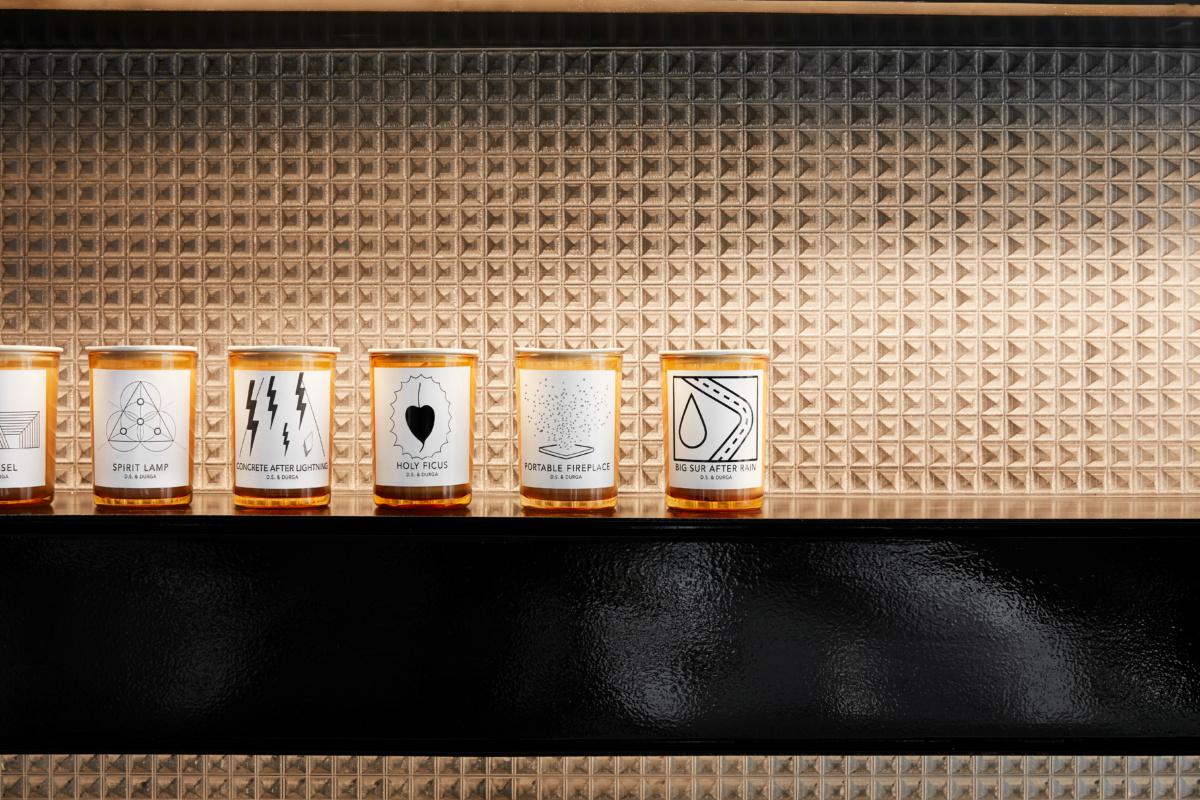
Photo by David Mitchell, courtesy of D.S. and Durga
Tell me a little bit about the process of creating scents. You have very specific, non-traditional scents like a Big Sur After Rain car air freshener and a Concrete After Lightning candle. Do things like that start with a concept first or a base scent first?
DM: It’s revolving on both sides. I have a working list of names and ideas for things, and I’m also always working on things. With Big Sur After Rain and Concrete After Lightning, the concept was first. So realistic re-creation is really important to us. With Big Sur, you get that eucalyptus grove, that after-rain humid sense; it’s very green and oceanic fresh. It’s very much about realism to go along with the narratives.
I don’t know of any other perfumes that come with liner notes. How important is packaging and visuals to the overall storytelling for D.S. & Durga?
DM: The key there is exploration. The last thing we ever want to be is didactic. Like, you have to read this and know every little thing I did on it. If you want, that information is certainly there. And we want to provide it to you. But we don’t want to say that you can only like this scent if you really realize it re-creates this house from 1820s Texas. It doesn’t have to be so in your face. Part of that is the dichotomy between Kavi and I: I’m very enthusiastic, but I’m not sure everyone cares. But it’s there for you to know if you want to.
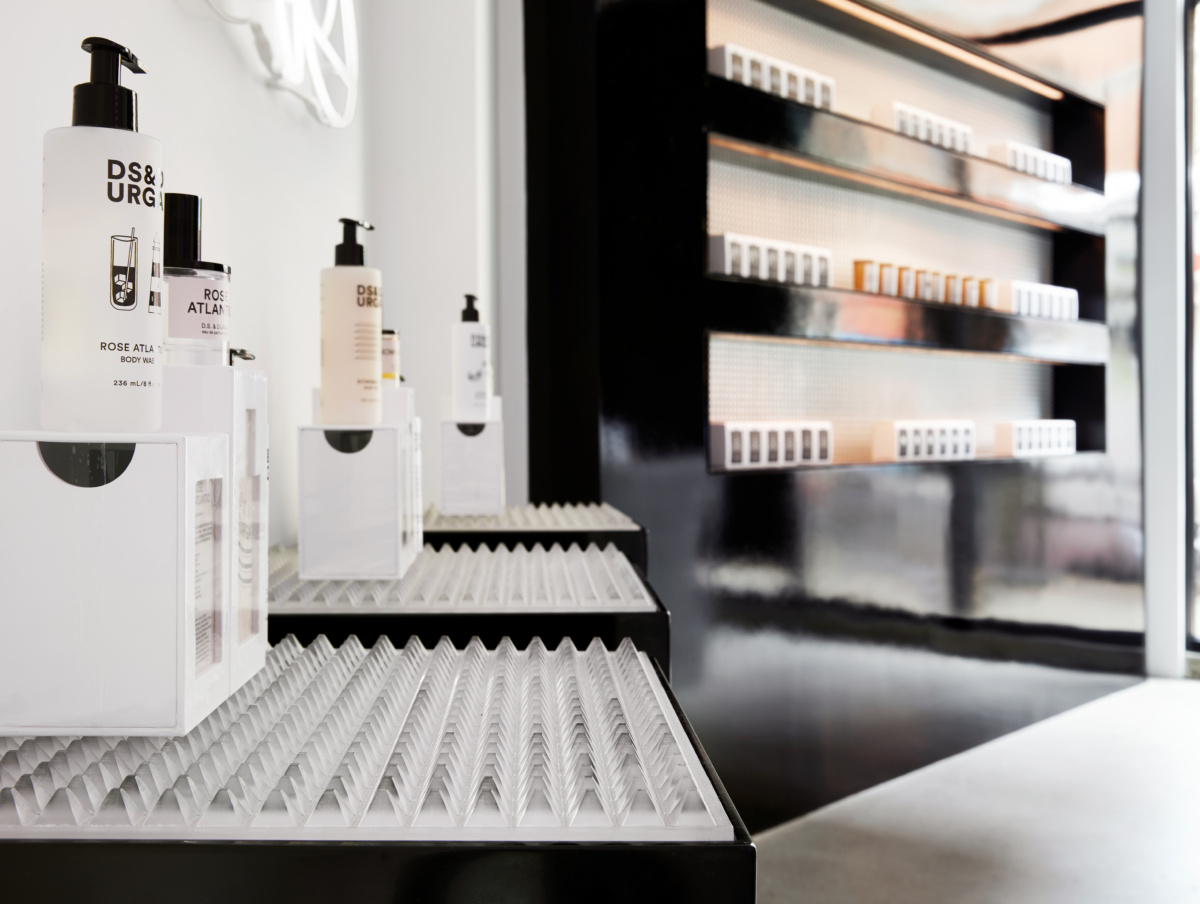
Photo by David Mitchell, courtesy of D.S. and Durga
KM: And in terms of packaging, I have the tendency to—and I would probably venture to say any designer does—to make something then maybe want to change it after a while, or you get sick of it. But when we make a product, we want it to be timeless, and we knew the way it looks will be around for a long time. So you have to make careful decisions about it, so it won’t be something that would bother us after a while. So it’s pretty restrained, neutral-looking, pretty simple. But, on the front [of the packaging], we realized it was looking a little too straight-laced, like we needed to mess it up a little bit. So the fixed double lines that were up front, we just curved them up—then sent it off to the printer that very second. And it was just a way of adding this fun, whimsical element that was not thought about at all or second-guessed at all. So I think that’s a good balance and way to think about design.
“The key is exploration. The last thing we ever want to be is didactic.”
DM: That’s very true. D.S. & Durga is a specific reflection of us. It’s definitely based on our whims; it’s not market researched. And we’re very good at making the big decisions; it’s the little, minute details we might get lost in. It always seems to work for us in that regard.
How has your process of creating perfumes changed since D.S. & Durga started 10 years ago?
DM: Well, I have access to materials I didn’t before because I work with two bigger companies. Our story is really different from most perfumers. I don’t want to make it sound like it’s better. It’s just that I’m able to work as a perfumer within two major perfume companies, without the use of one of their perfumers. Most people don’t really know what’s in their perfume because they’re not actually the perfumers. And [my situation] lets me use some pretty awesome stuff. That being said, we’ve always been really cognizant about doing things by the book, and the regulations on perfume are very strict. Like for us, you can only use a small, small percentage of jasmine. Things like that. So as we’ve gone on, there’s rarer stuff that I have to rebuild in my own way rather than use things that are outside the regulations. And, yeah, perfume has changed in the past 10 years. Regulations change all the time.
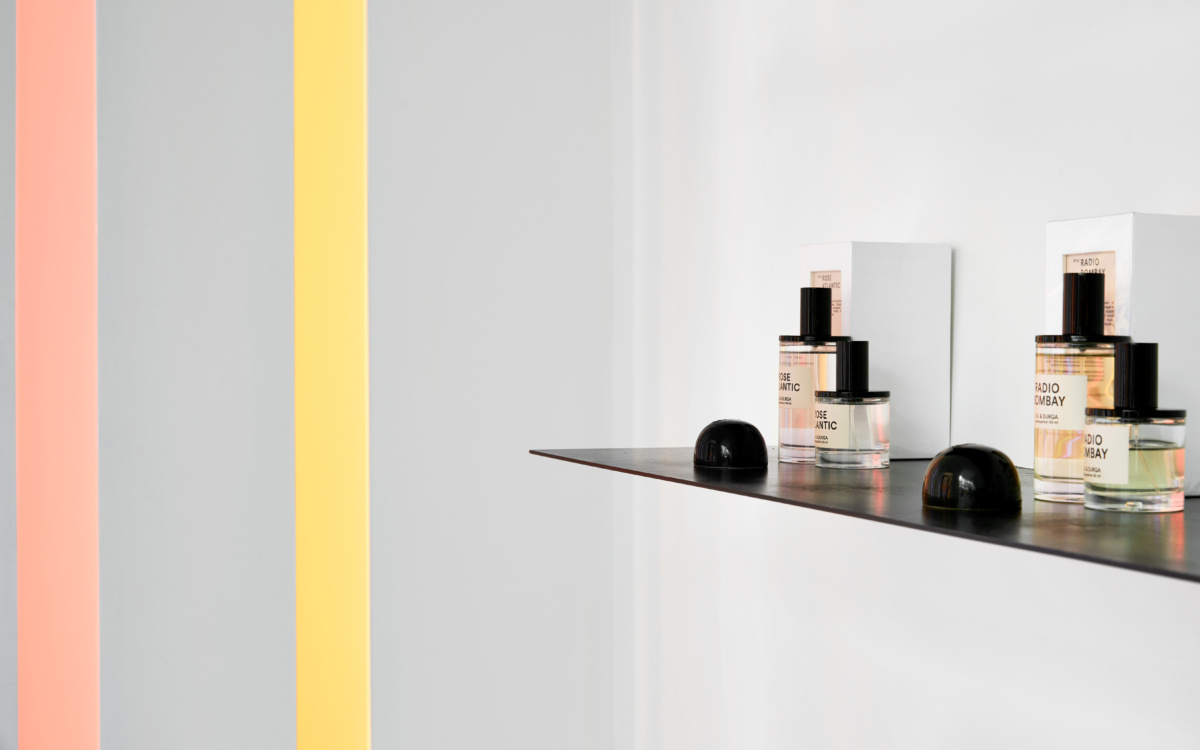
Photo by David Mitchell, courtesy of D.S. and Durga
Why do those regulations change?
DM: It’s really complex, but it’s pretty much a self-regulated industry because governments don’t know what are in perfumes, because they’re trade secrets. So the International Fragrance Association board (IFRA) analyzes every material that a perfumer can use and establishes a threshold that can be used, but the threshold changes depending on the product—Is it hand cream? Is it eau de parfum? Is it lipstick? So there are strict regulations depending on what it goes in … Those things are always being updated and changed based upon what the industry deems is safest, which they then pass along to the government. It ends up being very much the reverse of what people suppose; what we’re seeing is much more regulations coming with naturals than synthetics.
You’ve been open for almost two months now. What’s the feedback been like?
DM: It’s super busy. We’ve already had three events. Tons of people have come out. It’s in the best location. And we want to do more stores. We’d like to have more locations, for sure.

Kavi and David Moltz, co-founders of D.S. & Durga. COURTESY OF D.S. & DURGA
